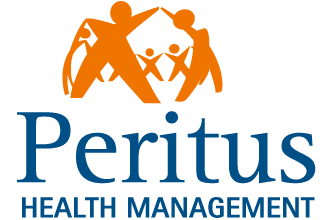COVID-19 Guidance
Guidance for occupational health providers, appointed doctors and employers on performing health/medical surveillance.
In the light of advice from Public Health England on COVID-19, the HSE has set out in guidance below, a proportionate and flexible approach to enable health/medical surveillance to continue. It applies where workers are undergoing periodic review under several sets of health and safety regulations. The guidance balances the current constraints presented by the COVID-19 outbreak and the need to protect the health, safety and welfare of workers.
The guidance will be subject to review.
If you require support with this, please do not hesitate to contact us on admin@peritushealth.com or 01484 722444.
Control of Substances Hazardous to Health (COSHH)
For health surveillance under COSHH regulation 11, the assessment can be undertaken as a paper review by administering the appropriate health questionnaire (eg respiratory) remotely. If no problems are identified, then a full assessment can be deferred for three months. Those with problems can be assessed further, for example, by telephone in the first instance. A judgement can then be made on whether to see the worker face to face and, if so, how to do so safely.
For medical surveillance under COSHH Schedule 6, the appointed doctor can use discretion to determine the content of the review. Therefore, they can perform a telephone review and if there are no problems, schedule a full review three months later. Where there is a problem, a judgement can then be made on whether to see the worker face to face and, if so, how to do so safely.
Control of Asbestos Regulations 2012 (CAR)
To undertake medical surveillance under CAR, appointed doctors can establish the worker has no significant symptoms by using a respiratory symptom questionnaire undertaken remotely. Providing there are no problems, they can then issue a new certificate for three months. Those with problems can be assessed further, for example, by telephone in the first instance. A judgement can then be made on whether to see the worker face to face and, if so, how to do so safely.
Ionising Radiations Regulations 2017 (IRR)
For routine medical surveillance of classified persons under IRR, the appointed doctor can conduct a paper review. For high risk radiation workers such as industrial radiographers, or those classified persons at the end of the five-year cycle where a face to face review is planned, they can carry out a telephone consultation and review the dose records and sickness absence records. If there are no problems, a follow up face to face review can be scheduled three months later. Where there is a problem, a judgement can then be made on whether to see the worker face to face and, if so, how to do so safely.
Control of Lead at Work Regulations 2002 (CLAW)
For medical surveillance under CLAW, where workers continue to be significantly exposed to lead, blood tests should continue. However, where a worker has been having annual blood tests, their blood lead level is low and stable and their risks from exposure to lead have not changed, the blood test can be deferred for three months.
Where a worker’s periodic medical assessment is due, the appointed doctor can assess them by telephone. Providing there are no problems, the next full review can be scheduled three months later. Where there is a problem, a judgement can then be made on whether to see the worker face to face and, if so, how to do so safely.
Control of Noise at Work Regulations 2005
Providing the worker does not identify any relevant problems, audiometry can be deferred for a period of three months. Where there is a problem, a review can be undertaken by telephone and then a judgement can be made on whether to see the worker face to face and, if so, how to do so safely.
Control of Vibration at Work Regulations 2005
The usual tiered approach to health surveillance will apply. Questionnaires can be administered remotely. Where there is a problem, a review can be undertaken by telephone and then a judgement can be made on whether to see the worker face to face and, if so, how to do so safely.


